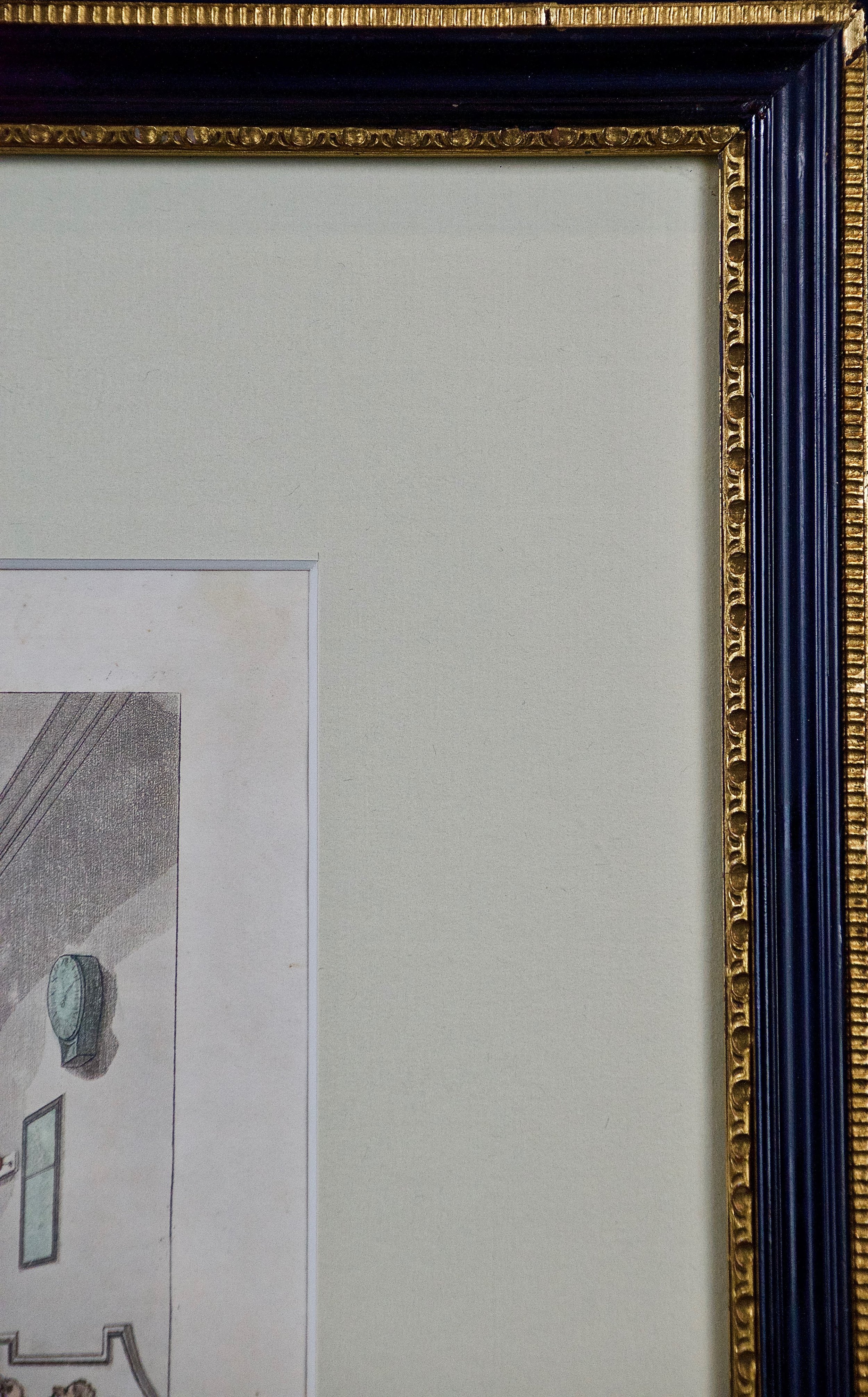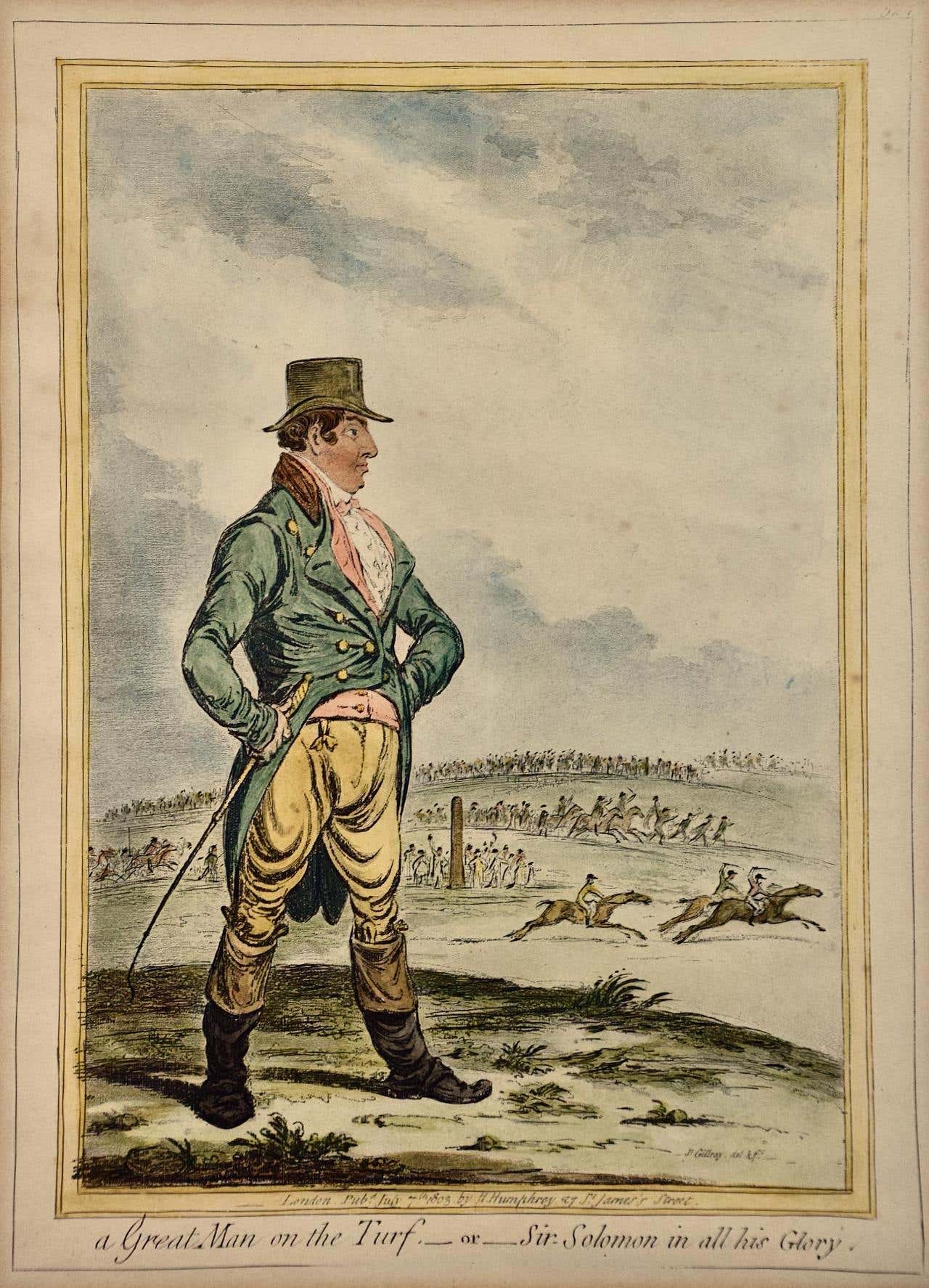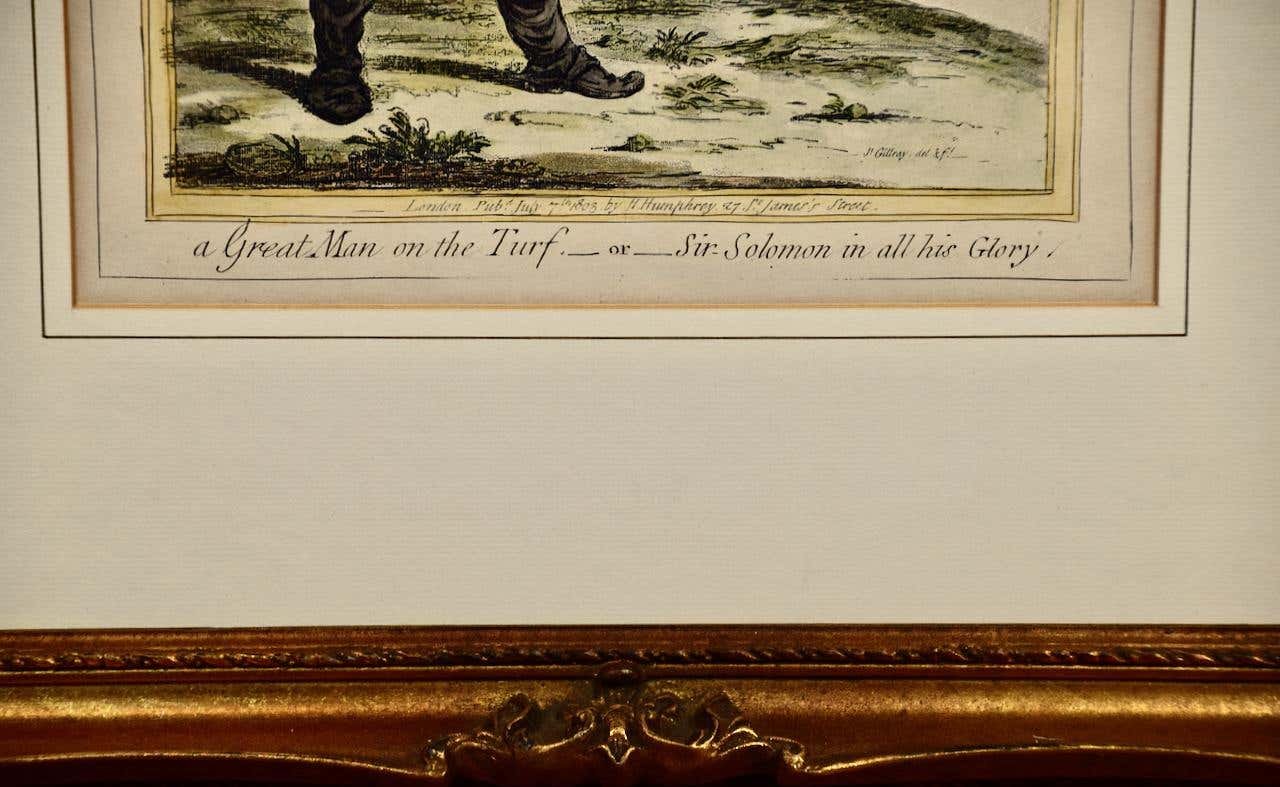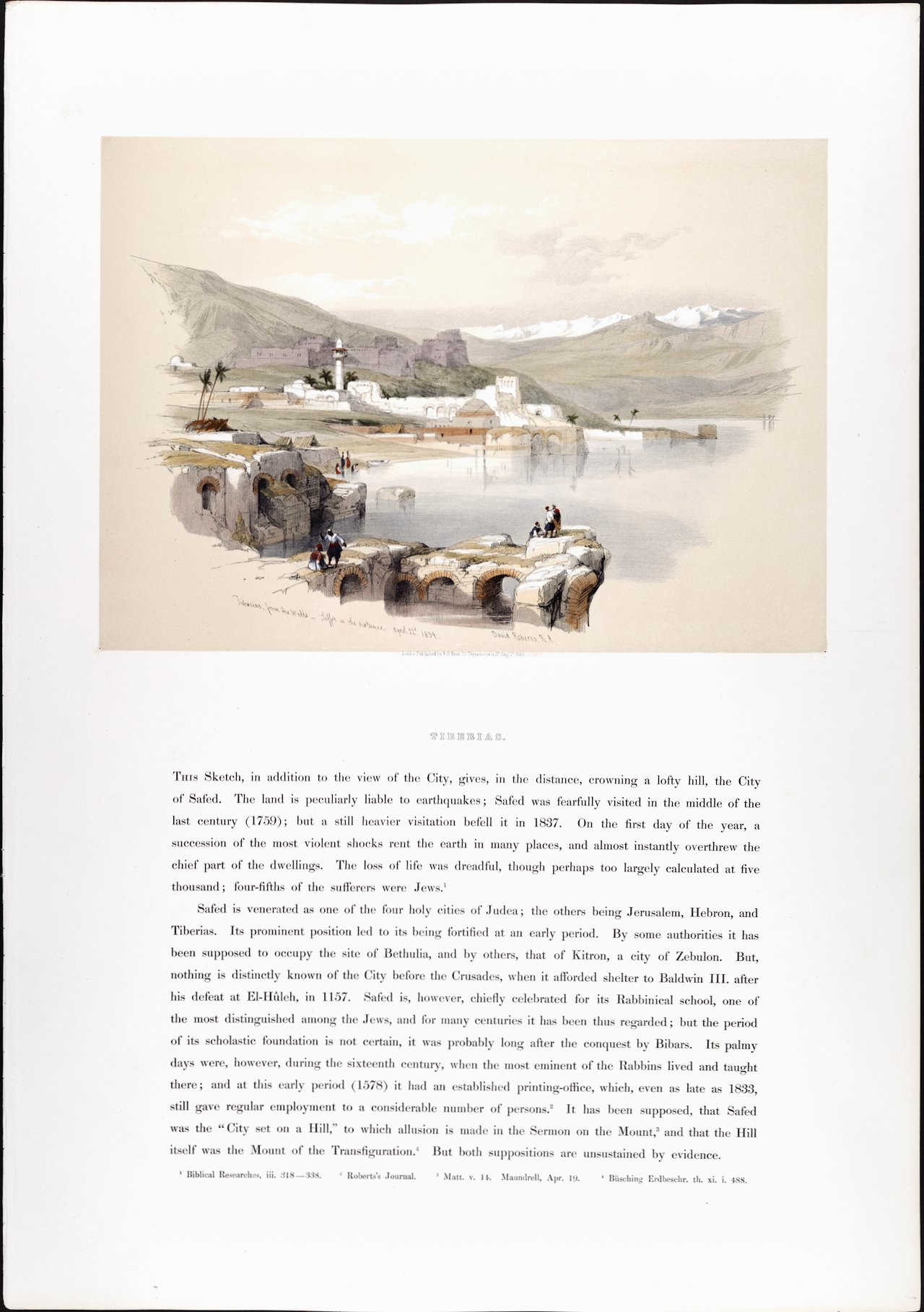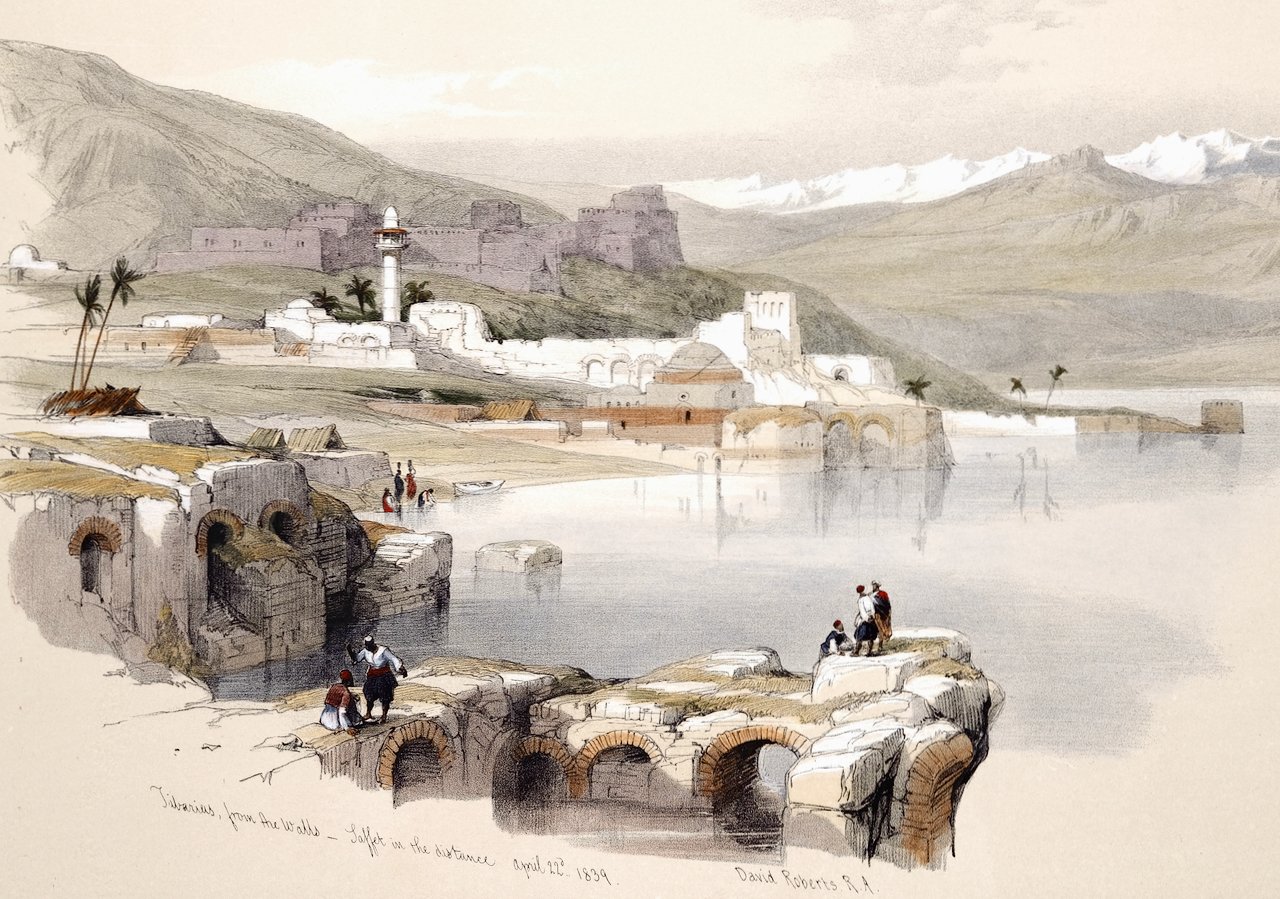The print is held in the collections of many museums, including the Metropolitan Museum of Art and the British Museum. It is presented here in a black wood frame with gold trim along its inner and outer margins with a pale mint green colored mat. There is a tiny tear at the edge of the left margin, but the print is otherwise in very good condition. There are small frame defects.
This print depicts a London magistrates' court, the "Bow Street Office", where the accused were brought before the magistrate to hear their cases and the testimony of witnesses. The room is filled with criminals, common folk, magistrates and their assistants and the Bow Street Runners, whose role it was to apprehend and capture criminals and bring them to the court. This print beautifully conveys the sense of what it was like to be in this noisy, crowded and somewhat chaotic room.
The work of the magistrates’ offices in the late 18th and early 19th centuries was crucial to the administration of justice in London. The magistrates dealt with London’s minor crimes (such as drunkenness, fighting and prostitution) in a brisk manner, dealing with offenders by way of fines and short periods of imprisonment. Thus the magistrates were able to leave the higher courts, such as the Old Bailey, to deal with only more serious cases of felony. The first magistrates’ office was opened in London’s Bow Street in the 1740s where Thomas De Veil heard cases from a room in his own home. The famous author and playwright Henry Fielding (1707-1754) became the second Bow Street magistrate in 1748 and was the . Fielding, who was a friend of William Hogarth, published several pamphlets about the state of public order and crime in the capital. When Fielding died in 1754 he was replaced by his half-brother John, known as the ‘blind beak of Bow Street’, who was famous for his legal thoroughness despite being blind since a teenager. It was at this time that London’s first professional detective force was also implemented, the famous ‘Bow Street Runners’ who travelled the country in pursuit of criminals.





